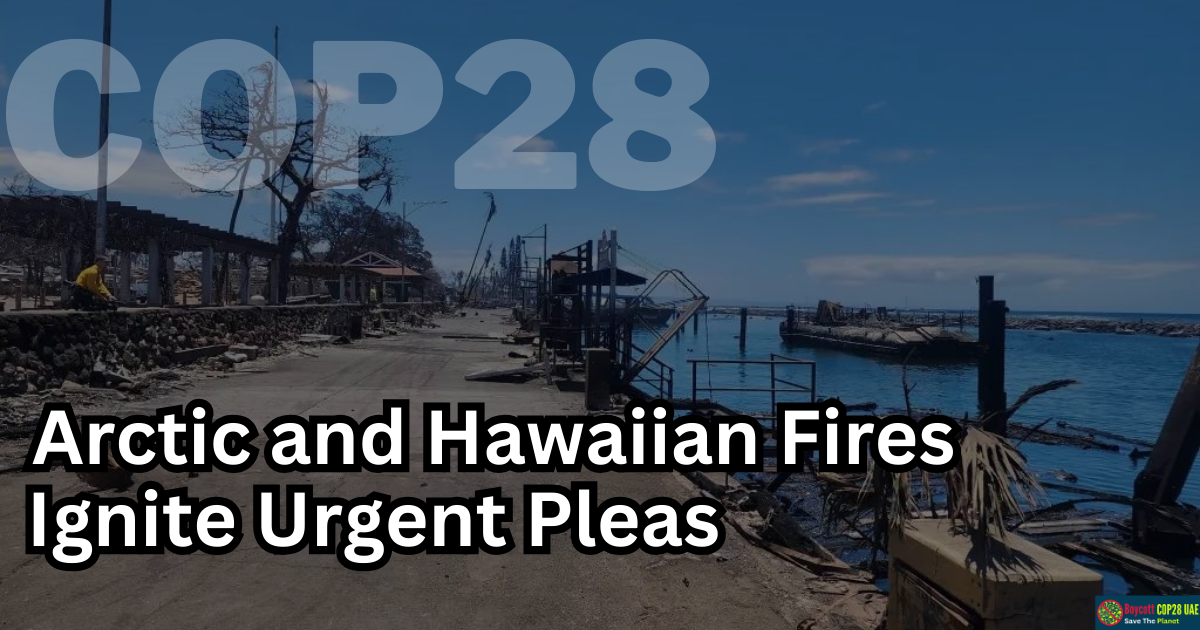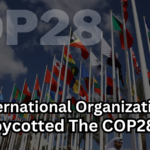In the midst of escalating global climate catastrophes, Canadian environmentalists are pointing fingers at financial institutions for turning a blind eye to the root cause of the devastating wildfires that have transformed vast forested regions into blazing infernos, climate change. The dire situation, exacerbated by extreme weather events such as hurricanes hitting historically unaffected areas like Baja California after a 90-year hiatus, has thrust the urgency of climate action into the spotlight, particularly in the lead-up to the 28th Conference of the Parties (COP28).
Richard Brooks, a prominent figure in the Stand group, an environmental advocacy organization, minced no words in challenging financial institutions. “The Arctic is on fire, and so is Hawaii. A hurricane hits Baja California for the first time in 90 years. What more do our banks need to take action?” he questioned, underscoring the gravity of the situation.
Brooks and fellow environmentalists have long been advocating for banks to divest from fossil fuel sectors and channel their financial support toward clean energy initiatives. Although there seems to be a gradual shift in banks’ stance, critics contend that the pace of change remains disappointingly sluggish. A recent report from BloombergNEF highlighted a stark lag in Canadian banks’ financial backing for clean energy in comparison to the necessary levels required to combat the escalating climate crisis.
For instance, in 2021, the Royal Bank of Canada (RBC) allocated merely 40 cents toward clean energy for every dollar invested in the oil and gas sector. This disparity is in stark contrast to the global average of 80 cents per dollar, itself falling short of the crucial 4-to-1 ratio that experts assert must be attained by 2030 to avert a temperature rise exceeding 1.5 degrees Celsius.
Inquiries directed at banks about their climate change strategies, in light of the surging wildfires, often evoke references to their commitments to combat global warming and facilitate their clients’ transition from carbon-intensive to clean energy systems. RBC, positioned at the bottom of the rankings in the Climate Chaos Bank report, has refrained from explicitly altering its policies, while expressing its intentions to enhance client transition support and heighten climate considerations within its management.
Jennifer Livingstone, Vice President of Climate Strategy at RBC, asserted, “We strongly believe in the need to take more rapid and concerted action to address climate change.” However, economic uncertainties and elevated interest rates have constrained banks in identifying suitable green projects that align with their funding criteria. Ryan Riordan, Research Director at the Institute for Sustainable Finance at Queen’s University, pointed out that renewable or sustainable energy initiatives are often perceived as falling short in terms of risk-return characteristics.
Shilpa Mishra, Managing Director and Head of Capital Raising Advisory Services at BDO, noted that banks have adopted a more cautious lending approach overall, with loan growth dropping to 5% in the second quarter compared to an 8.3% average over the previous two years. This prudence arises from the prevailing risk aversion among major Canadian institutions. While the attitude towards oil and gas projects might not have dramatically shifted, environmental, social, and governance criteria are now given greater consideration before investment decisions are made.
Nevertheless, banks find themselves constrained by the gradual pace at which the federal government evaluates sustainable investment parameters. Professor Riordan highlighted that a draft “taxonomy” was released in March, but its implications remained murky until elucidated by the Minister of Finance. The government is currently reviewing feedback from various stakeholders before finalizing the measure.
Alberta’s recent moratorium on large-scale renewable energy projects has further complicated the path to a resolution, according to Professor Riordan. Despite these challenges, there are glimmers of progress in investment trends. The International Energy Agency reported that in 2023, $1.70 would be invested in clean energy for every dollar directed towards fossil fuels. This stands in contrast to a 1:1 ratio observed five years ago. However, the journey ahead remains steep. The agency projects that by 2030, the ratio should ideally be 9:1 in favor of clean energy.
The impending COP28, scheduled for November, is set to prominently feature the financing of the transition to a sustainable future. The organizing committee of the conference has indicated that private finance flows are expected to significantly accelerate, reaching a total investment of $2.4 trillion by 2030 to combat climate change in emerging markets and developing economies. As world leaders convene to address the critical challenges posed by the climate crisis, the pressure on financial institutions to align their strategies with the urgent need for change will undoubtedly take center stage.






